I have a big string of numbers that is the input of the program (I supposed that the sequence name is 'S') it can be either a string or in a table column.
the input string (S) produced by the table like table 1.
I want to find unknown sub strings that made the "S" string.
each sub string made of 100 numbers.
We simplify the example like below: Each sub string contain three number instead of 100 number .
table 1:

table 1 description: each row of table 1 is belong to one of the sub string that repeated in "s" sting. For each column we have exactly ten numbers that this numbers made by random repeating of numbers belong to that column. For example: For the first column we can have for instance four 11 and six 65 or one 11 and nine 65 and etc. and other columns are exactly like that. And for columns with one number each ten repeating is that number for example column number seven is like below: 50 50 50 50 50 50 50 50 50 50 .
the output is repeated sub strings that made the "S" string. output:
11,10,13
30,40,50
65,66,61
can anyone help me with the pl_sql or java to solve the problem.